 Menu
Menu
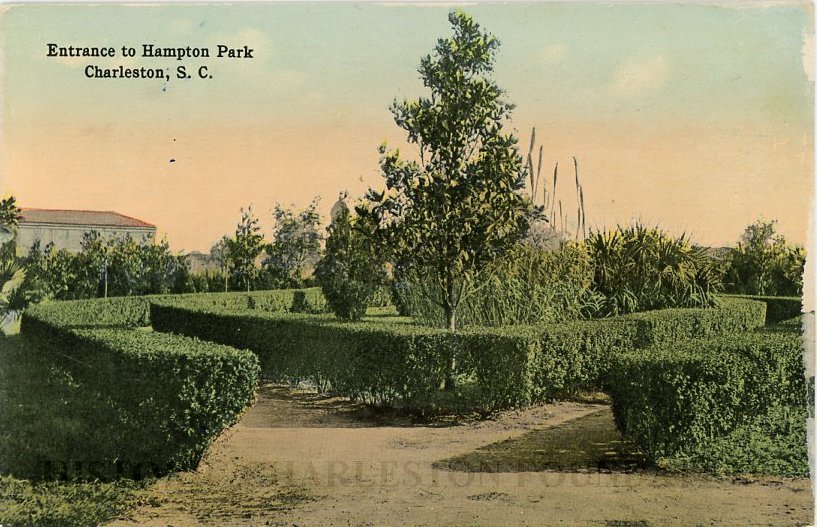
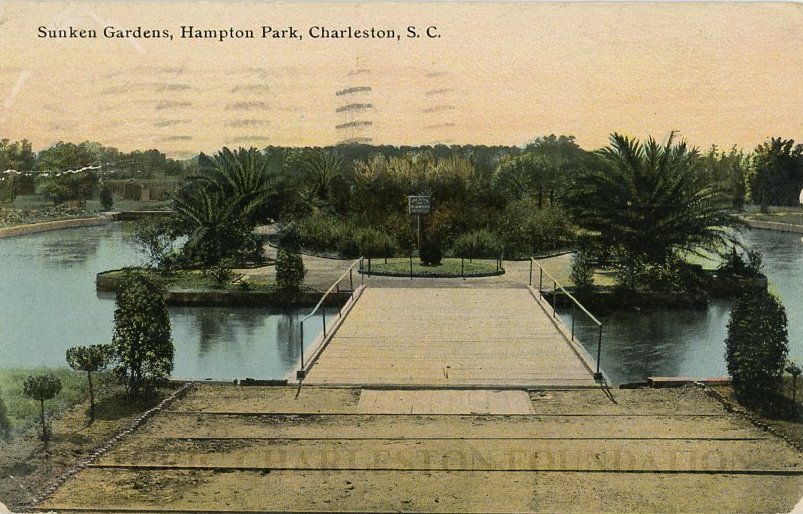
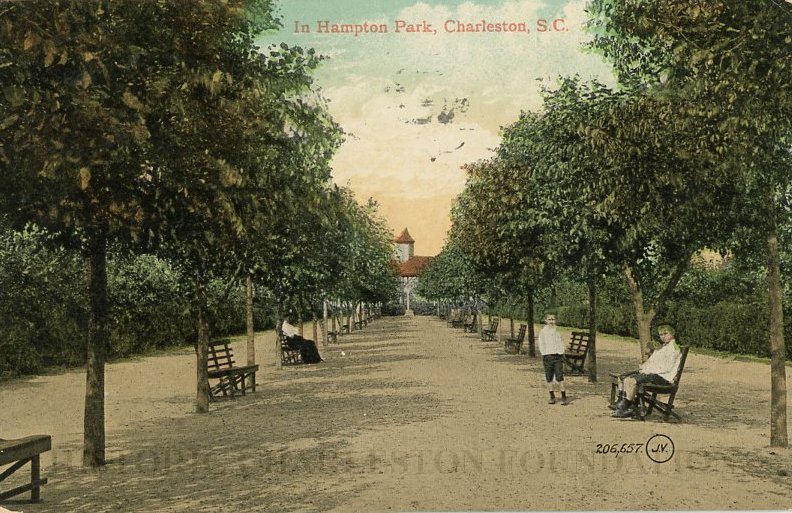
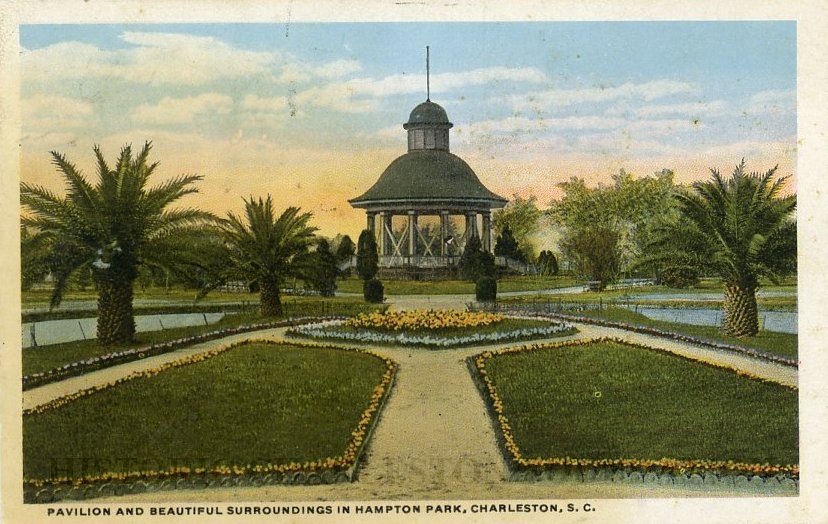
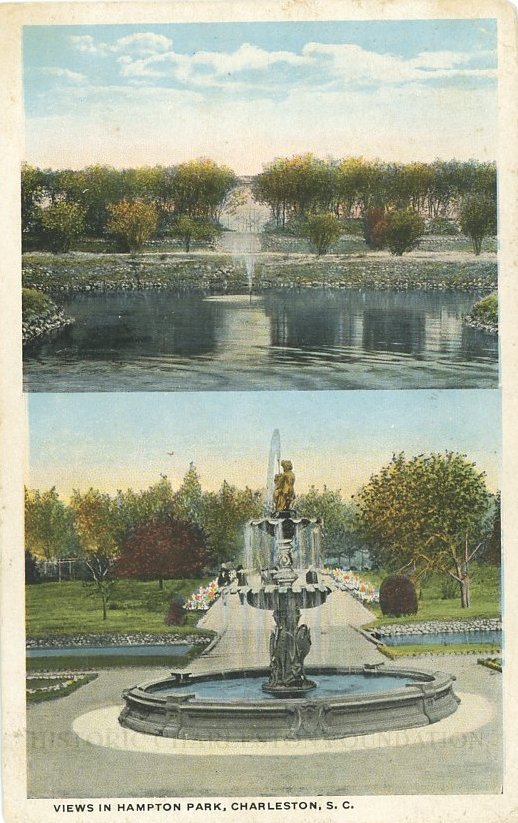
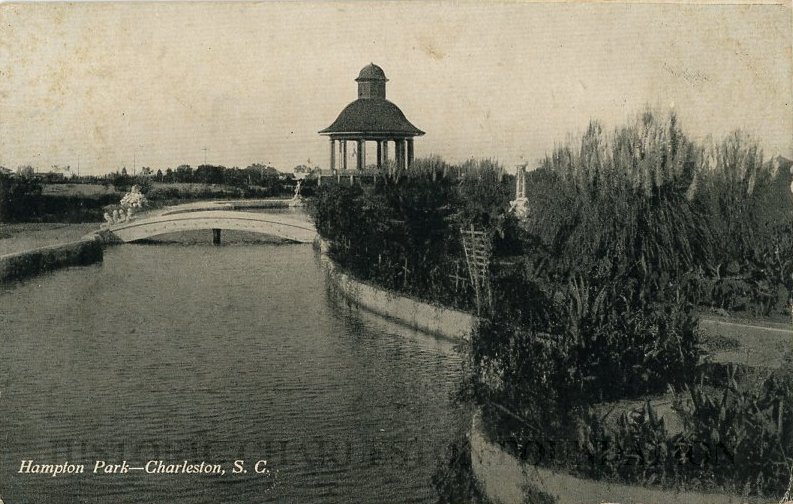
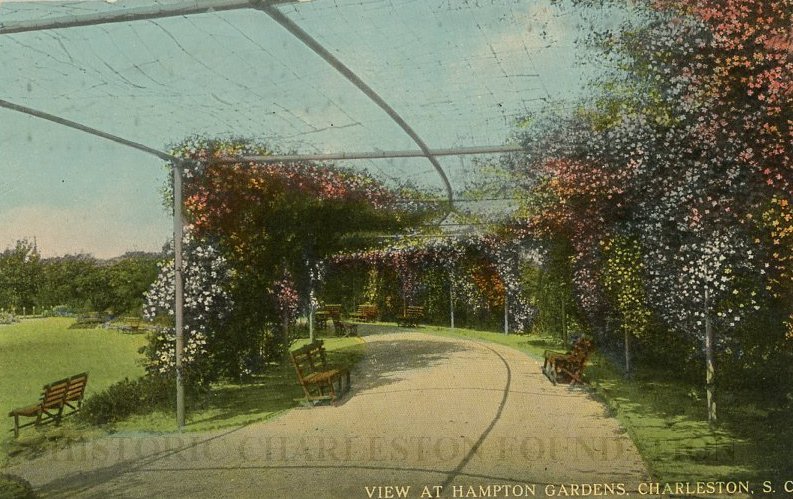
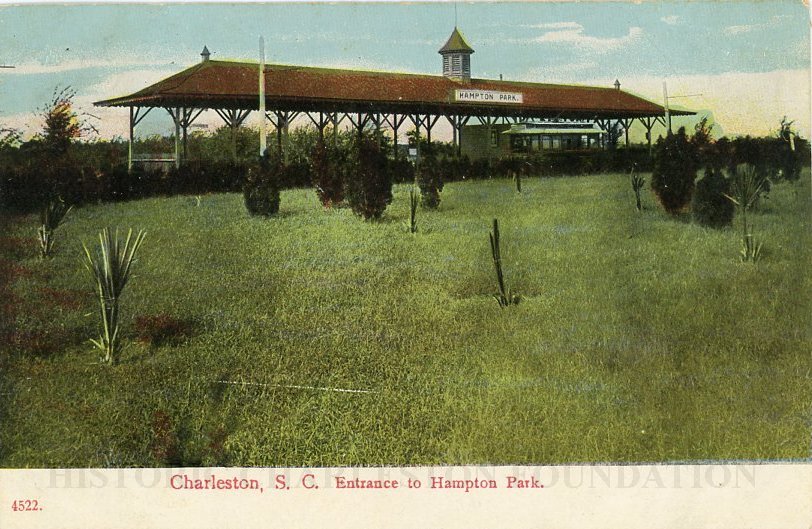
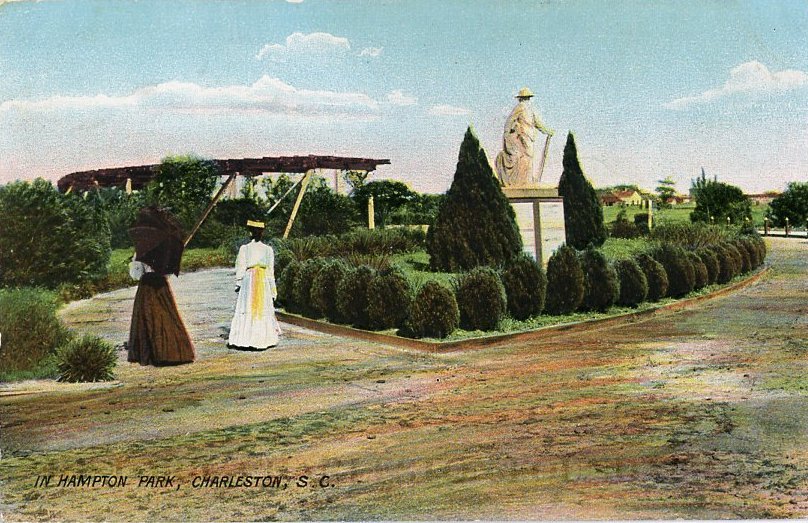
Nine postcards of various views in Hampton Park:
a: Titled "Entrance to Hampton Park." Early 20th c.
b: Titled "Sunken Gardens." Postmarked July 6, 1911.
c: Titled "In Hampton Park." People sitting on park benches along a footpath. View is looking east, showing the roof of the trolley stop building that was on Cleveland Street. Postmarked September 24, 1909.
d: Titled "Pavilion and Beautiful Surroundings in Hampton Park." Postmarked 1913.
e: Titled "Views in Hampton Park." Early 20th century. View of a pond (top) and a fountain (bottom). Captioned "King Street car direct to the grounds. In the days of long ago, this Park was part of the old Washington Race Track, and under its great oaks, near the river, many famous duels were fought. In 1901-02 it was used for the South Carolina Inter-State and West Indian Exposition, but only here and there can a trace of that time be seen. It is beautiful with its sunken garden; and in the Spring it abounds with a profusion of various kinds of flowers."
f: View of the footbridge over a pond and the pavilion. Postmarked October 11, 1909.
g: Titled "View at Hampton Park Gardens," showing a footpath lined with flowers. Message on back dated November 11, 1913.
h: Titled "Entrance to Hampton Park," showing a view across the grounds to a pergola that had been in front of the Cotton Palace during the Exposition. Postmarked September 26, 1907.
i: Titled "In Hampton Park," showing two women walking on a footpath. View of the remains of the pergola (show in photo H) in background and a remaining statue from the Exposition is at the right in the center of a small garden. Undated but possibly 1922, based on legend on back.